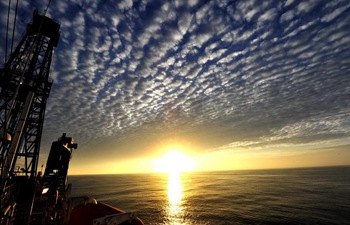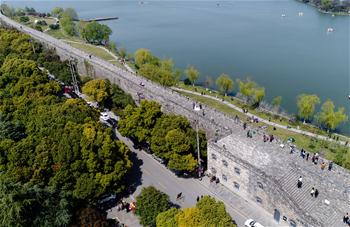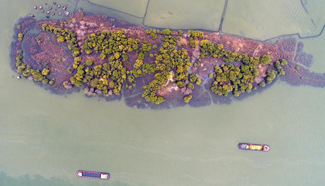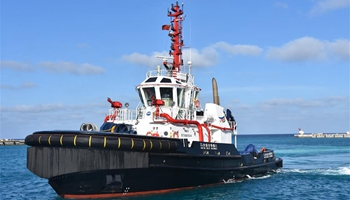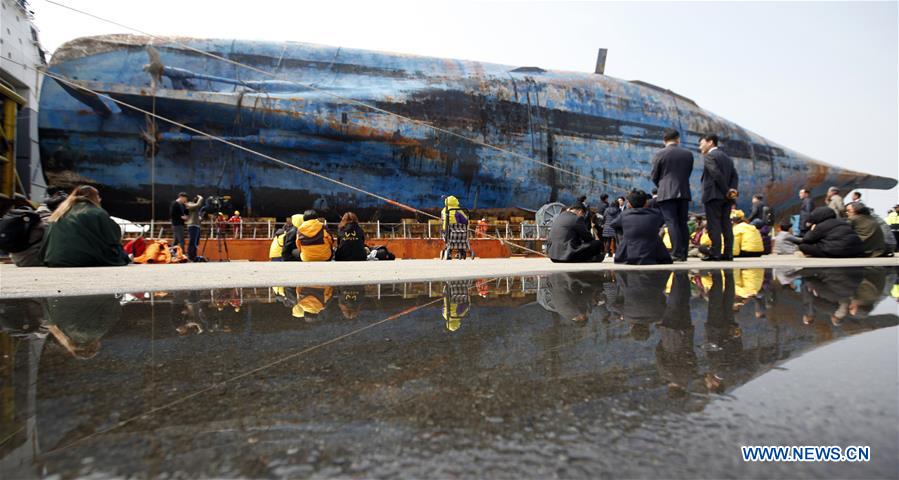
The remains of sunken South Korean passenger ferry Sewol arrive at a port in Mokpo, some 90 km away from the Jindo Island, South Korea, March 31, 2017. The 6,825-ton passenger ferry Sewol capsized and sank in waters off Jindo Island on April 16, 2014. It claimed the lives of 304 people, mostly high school students on a school trip. (Xinhua/Yao Qilin)
SEOUL, March 31 (Xinhua) -- The passenger ferry Sewol of South Korea, which sank three years ago in waters off the country's southwestern coast and killed over 300 people, was transported Friday to a nearby port for search and inspection.
The semi-submersible transport vessel carrying the ill-fated ferry arrived at the Mokpo port at about 1 p.m. local time, some 90 km away from the sea off the Jindo Island where the Sewol capsized and sank on April 16, 2014.
Among 476 passengers, only 172 were rescued. The victims were mostly high school students on a school trip to the southern resort island of Jeju from Incheon, west of Seoul. Nine bodies remain unaccounted for.
The ferry, which had lain on its left side at a depth of about 40 meters for almost three years, was lifted last week to the surface. At the port, it was set to be mounted on a dry dock to search the missing people and determine the clear cause of the disaster.
Shanghai Salvage, a Chinese company which had led the salvaging operation, said its team is now focusing on the final landing of the ferry to make the complicated, time-consuming task successful. The task is forecast to come to an end next Thursday.
Since the Shanghai Salvage came to South Korea in August, 2015, its divers have taken turns in going underwater for almost 13,000 hours while having dispatched ships over 3,000 times for preparatory works and the final lifting.
Evaluating the salvaging operation, a British consultancy told a press conference in Mokpo that works of Shanghai Salvage were very satisfactory as all were done as planned without any setback.
To raise the Sewol, beams were put underneath the ferry. The beams were attached to wires that were pulled up by two jack-up barges. Then, the raised Sewol was moved to the semi-submersible vessel that carried the ferry to the port.
The salvaging efforts were made in the water, which is infamous for fast currents and unstable weather conditions.
The Chinese company said the hardest work was to lift the vessel as a whole while maintaining its original status without damaging its main structure, in order to protect the missing bodies inside the ferry.
To achieve that goal, the Shanghai team said it created fresh technologies and kept on reforming equipments.





